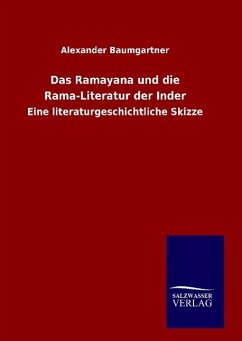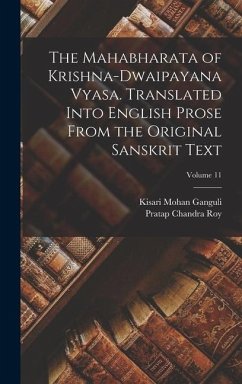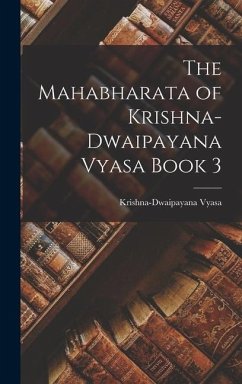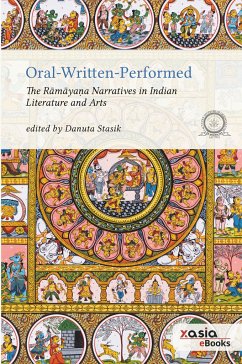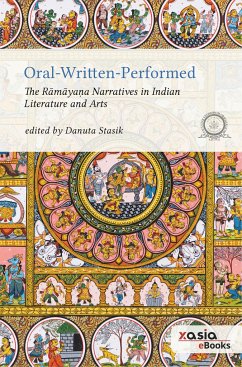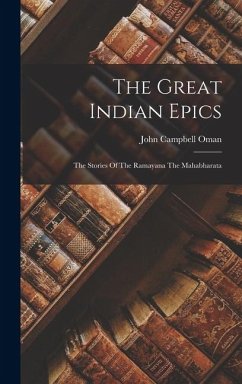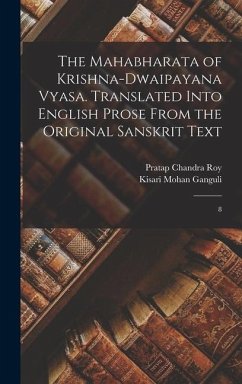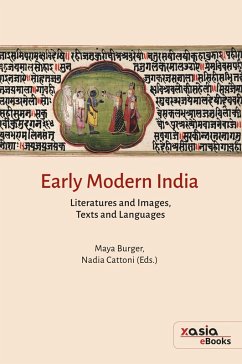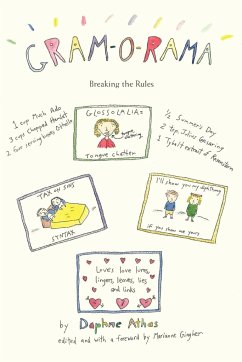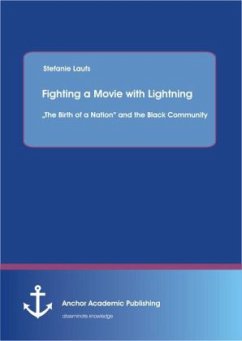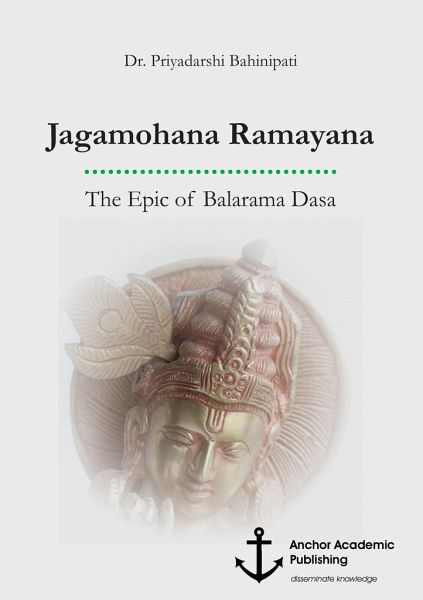
Jagamohana Ramayana. The Epic of Balarama Dasa

PAYBACK Punkte
0 °P sammeln!
One of the main topics of ancient Sanskrit literature and medieval literature from different parts of India are Rama and Krishna oriented themes. From Valmiki Ramayana in Sanskrit to Ramayana in different vernacular languages of Tamil, Telgu, Malayalam, Kannada, Assamese, Gujarati, Bengali, Odishi, Marathi and Hindi, all have proceeded from the rudimentary stage of local language literature to become Mahakavyas in their respective areas and reached every nook and corners of the region, galvanizing the minds and hearts of the populace. Although they have been composed in different periods and t...
One of the main topics of ancient Sanskrit literature and medieval literature from different parts of India are Rama and Krishna oriented themes. From Valmiki Ramayana in Sanskrit to Ramayana in different vernacular languages of Tamil, Telgu, Malayalam, Kannada, Assamese, Gujarati, Bengali, Odishi, Marathi and Hindi, all have proceeded from the rudimentary stage of local language literature to become Mahakavyas in their respective areas and reached every nook and corners of the region, galvanizing the minds and hearts of the populace. Although they have been composed in different periods and the poets and composers have a different style of presentation of their own, they acquired the status of original spokespersons of Ramayana in their respective regions. It is a fact that Indian languages and literature are enriched by the form, content, ideas and ideologies of the epics of yesteryears. After Rama became accepted as an incarnation of Vishnu and after the popularization of devotion of Rama in the fourteenth century, all literature was intertwined in the current of a feeling of love and devotion. This trend has been manifested in the work of Balarama Dasa, one of the doyens of litterateurs of medieval Odisha. He equated Rama with Lord Jagannath and named his version of Ramayana as Jagamohana Ramayana itself. He belonged to a group of litterateurs who were famous in the history of Odisha as Panchasakhas and were known for their sublimity, egalitarianism and intellectualism.
It is always important to revisit the works of literature of different periods to find out about the state of mind of those writers and composers who generated their literary marvels to establish their views emphatically with a reformative approach. In Odisha, the Panchasakhas were the champions of liberty, fraternity and equality. Therefore, it is even more important to analyse their works again to escalate the idea of free thought and expression and rescue the gamut of their opinions and ideas from intellectual hibernation.
It is always important to revisit the works of literature of different periods to find out about the state of mind of those writers and composers who generated their literary marvels to establish their views emphatically with a reformative approach. In Odisha, the Panchasakhas were the champions of liberty, fraternity and equality. Therefore, it is even more important to analyse their works again to escalate the idea of free thought and expression and rescue the gamut of their opinions and ideas from intellectual hibernation.




